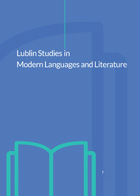La Modernité de la Construction du Personnage de Cripure dans Le Sang Noir de Louis Guilloux
Innovation in the construction of the character of Cripure in “Le Sang Noir” by Louis Guilloux
Author(s): Renata Bizek-TataraSubject(s): Literary Texts
Published by: Wydawnictwo Naukowe Uniwersytetu Marii Curie-Sklodowskiej
Keywords: Louis Guilloux; New Novel; literature
Summary/Abstract: After André Gide and Marcel Proust, Louis Guilloux is one of the first writers of the 20th century who rejects the 19th-century literary tradition, creating in 1935 an exceptional and innovative novel – Le Sang Noir. Its innovation resides in the similarity to the New Novel from the 50s on the level of composition, narration, organization of spatio-temporal setting, role of the reader and character construction. The article discusses the innovative character construction employed by Guilloux in the creation of Cripure, the protagonist. By means of the techniques of internal monologue and various points of view, the author created a protagonist with highly complex personality, impossible to be unambiguously characterized. An anonymous narrator, showing dualistic approach towards the protagonist, constantly shifts the points of view, rendering any description of the protagonist’s identity unfeasible as the information provided about him by the narrator and other characters is contrary. Guilloux uses elliptic constructions, enabling the reader to interpret characters’ conduct. However, the constructions do not reveal the motivation of their actions, but are limited to presenting events, citing characters’ statements and, above all, demonstrating their behavior. The reader has to fill the gaps and interpret characters’ conduct themselves. Two decades later, this “adventure of writing” rather than “writing of adventure” will become one of the fundamental principles of the New Novel.
Journal: Lublin Studies in Modern Languages and Literature
- Issue Year: 32/2008
- Issue No: 1
- Page Range: 20-30
- Page Count: 11
- Language: French

